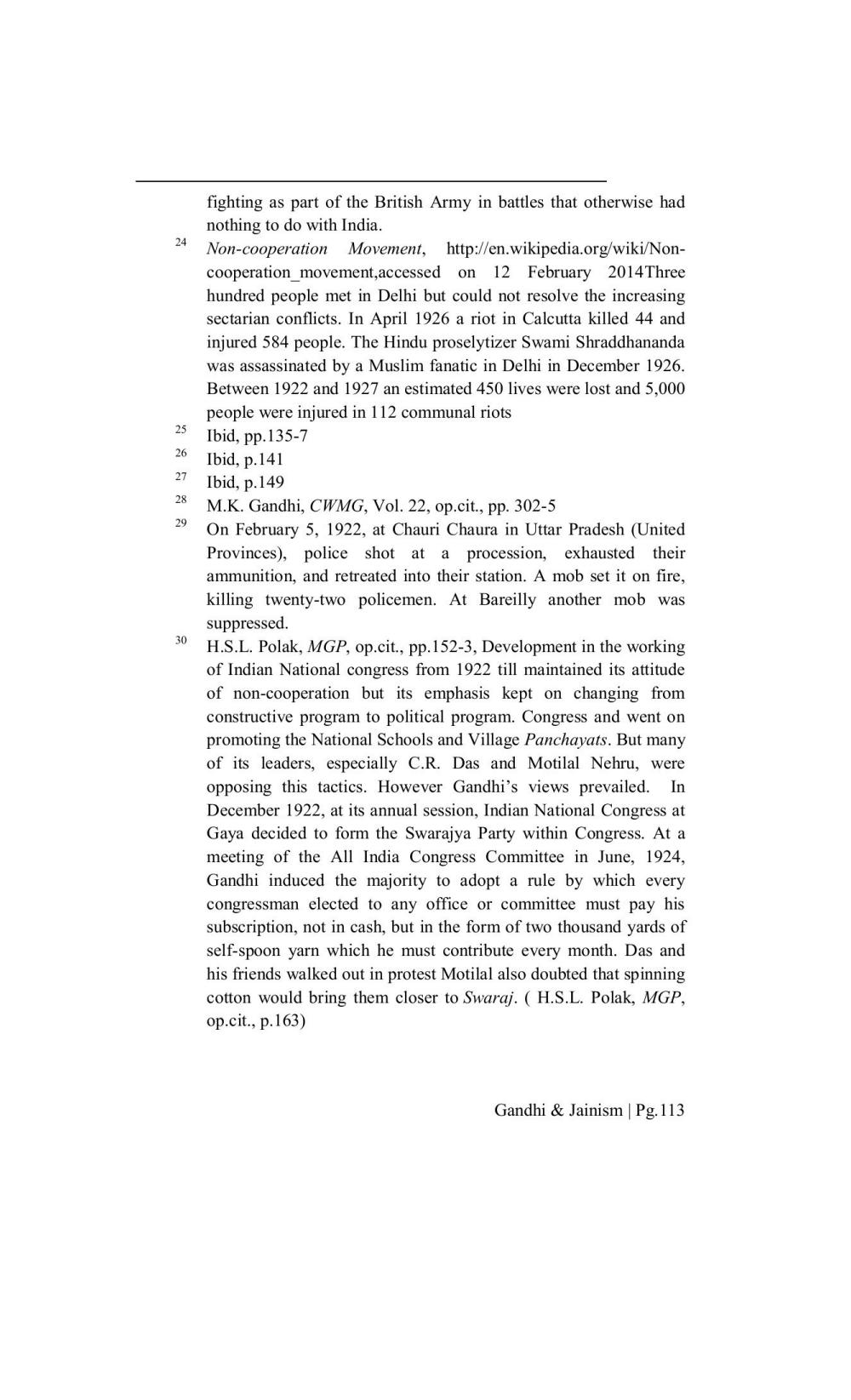________________
24
22222
25 Ibid, pp.135-7
27
26 Ibid, p.141
28
fighting as part of the British Army in battles that otherwise had nothing to do with India.
Non-cooperation Movement,
29
http://en.wikipedia.org/wiki/Noncooperation_movement,accessed on 12 February 2014Three hundred people met in Delhi but could not resolve the increasing sectarian conflicts. In April 1926 a riot in Calcutta killed 44 and injured 584 people. The Hindu proselytizer Swami Shraddhananda was assassinated by a Muslim fanatic in Delhi in December 1926. Between 1922 and 1927 an estimated 450 lives were lost and 5,000 people were injured in 112 communal riots
30
Ibid, p.149
M.K. Gandhi, CWMG, Vol. 22, op.cit., pp. 302-5
On February 5, 1922, at Chauri Chaura in Uttar Pradesh (United Provinces), police shot at a procession, exhausted their ammunition, and retreated into their station. A mob set it on fire, killing twenty-two policemen. At Bareilly another mob was suppressed.
H.S.L. Polak, MGP, op.cit., pp.152-3, Development in the working of Indian National congress from 1922 till maintained its attitude of non-cooperation but its emphasis kept on changing from constructive program to political program. Congress and went on promoting the National Schools and Village Panchayats. But many of its leaders, especially C.R. Das and Motilal Nehru, were opposing this tactics. However Gandhi's views prevailed. In December 1922, at its annual session, Indian National Congress at Gaya decided to form the Swarajya Party within Congress. At a meeting of the All India Congress Committee in June, 1924, Gandhi induced the majority to adopt a rule by which every congressman elected to any office or committee must pay his subscription, not in cash, but in the form of two thousand yards of self-spoon yarn which he must contribute every month. Das and his friends walked out in protest Motilal also doubted that spinning cotton would bring them closer to Swaraj. (H.S.L. Polak, MGP, op.cit., p.163)
Gandhi & Jainism | Pg.113




